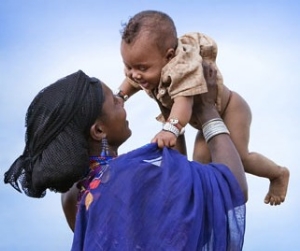 A child’s health depends on the child’s environment. Children who live in poor households are more likely to die, more likely to suffer the irreversible effects of poor nutrition, and less likely to benefit from a health-care system if one is available.
A child’s health depends on the child’s environment. Children who live in poor households are more likely to die, more likely to suffer the irreversible effects of poor nutrition, and less likely to benefit from a health-care system if one is available.
It’s estimated that 9.2 million children under the age of five die each year in developing countries due to easily preventable or treatable diseases or medical conditions. The international organization Save the Children has published a new report called Lasting Benefits, The role of cash transfers in tackling child mortality. (PDF) It explains why regular donations (cash transfers) to poor communities make a difference, whether the money comes from sponsoring a child, making an online purchase, or a simple donation.
It’s been argued that cash transfer programs prevent adults from seeking work and create a dependent culture, perpetuating poverty from one generation to the next. The report documents that this is not the case. Children from households that receive cash transfers are more likely to be in school, to stay in school longer, and to earn more as adults. This is especially true for girls. Well-designed cash transfer programs enhance the status of women, an extremely significant factor in determining whether children survive.
The study shows that cash transfers not only increase the survival of newborns and children. Lifting households with young children out of poverty is an investment in the future, passed on from one generation to the next.
Sources:
(Links will open in a separate window or tab.)
Jennifer Yablonski with Michael O’Donnell, Lasting Benefits, The role of cash transfers in tackling child mortality (PDF)
Editorial, Cash transfers for children–investing into the future, The Lancet, June 27, 2009, Vol. 373 No. 9682, p. 2172
Website for Save the Children


Sorry, comments are closed for this post.